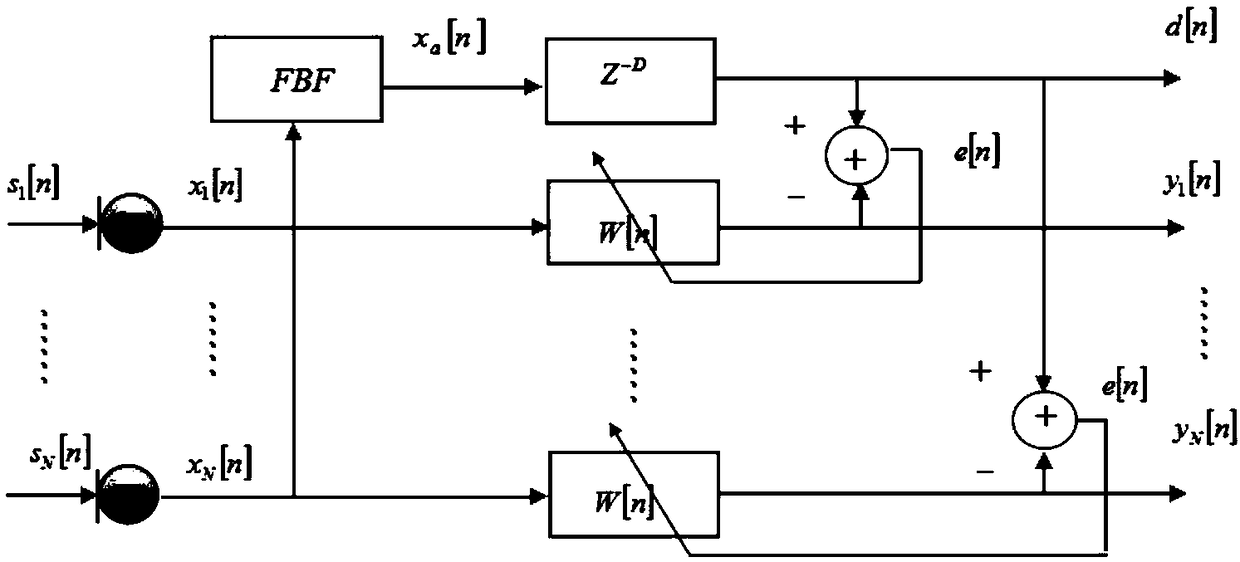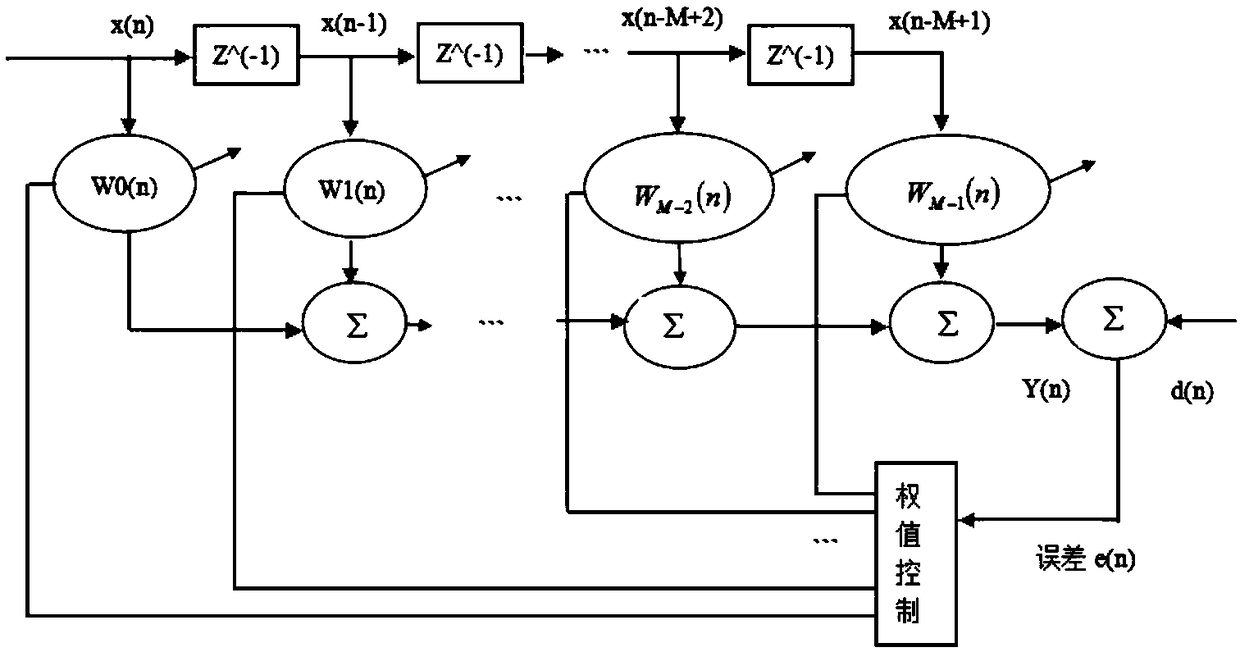Adaptive Calibration Method of Microphone Array Output Signal Based on rls Algorithm
A microphone array and output signal technology, which is applied in the field of signal processing, can solve the problems of output signal attenuation or distortion, and achieve the effect of improving the accuracy of calibration
- Summary
- Abstract
- Description
- Claims
- Application Information
AI Technical Summary
Problems solved by technology
Method used
Image
Examples
Embodiment 1
[0042] Such as Figure 4 Said, the calibration method provided by the present invention comprises the following steps:
[0043] S1. Select the output signal x of the nth group of microphone array N microphones 0 (n), x 1 (n), x 2 (n),...,x N-1 (n) as a signal to be calibrated;
[0044] S2. Select the nth group output signal x of one of the microphones i (n) Input to the fixed beamformer, the fixed beamformer outputs the signal x i The characteristics of (n) are averaged to obtain the output signal x a (n);
[0045] S3. Pass the delay filter to x a (n) Obtain the reference signal d(n) after performing time delay compensation;
[0046] S4. Output signal x 0 (n), x 1 (n), x 2 (n),...,x N-1 (n) respectively input to the calibration filter W 0 [n], calibration filter W 1 [n], ..., calibration filter W N-1 [n] for calibration, calibration filter W 0 [n], calibration filter W 1 [n], ..., calibration filter W N-1 [n] Output the calibrated output signal y respectivel...
Embodiment 2
[0061] In this embodiment, specific experiments are carried out on the basis of the method provided in Embodiment 1. The flow chart of the experiment is as Figure 5 As shown, the experiment of this embodiment takes N=8 microphones to form a microphone array according to a certain topology, such as figure 1 As shown, after the voice signal s(n) from the sound source is received by the microphone, the microphone outputs the signal x N (n). In the experiment, the output signals of 8 microphones are input into the fixed beamformer, and the fixed beamformer averages the output signal characteristics of each microphone to obtain the signal x a (n). x a (n) is used as a reliable and ideal reference signal d(n) after time delay compensation. Afterwards, each microphone output signal x N (n) are respectively input into the same calibration filter, and its output signal y N (n) as the calibrated output signal. After the calibration is completed, the coefficients of the calibrat...
PUM
 Login to View More
Login to View More Abstract
Description
Claims
Application Information
 Login to View More
Login to View More - R&D
- Intellectual Property
- Life Sciences
- Materials
- Tech Scout
- Unparalleled Data Quality
- Higher Quality Content
- 60% Fewer Hallucinations
Browse by: Latest US Patents, China's latest patents, Technical Efficacy Thesaurus, Application Domain, Technology Topic, Popular Technical Reports.
© 2025 PatSnap. All rights reserved.Legal|Privacy policy|Modern Slavery Act Transparency Statement|Sitemap|About US| Contact US: help@patsnap.com



